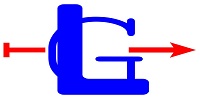Within the 1940s and 50s reports of “flying saucers” became an american phenomena that are cultural. Sightings of strange objects when you look at the sky became the materials that are raw Hollywood to provide visions of potential threats. Posters for films, like Earth vs. the Flying Saucers from 1956 illustrate these fears. Connected to ongoing ideas about life on the Moon, the canals on Mars, and ideas about Martian Civilizations, flying saucers have started to represent the hopes and fears of the world that is modern.
Are these alleged visitors from other worlds peaceful and benevolent or would they attack and destroy humanity? The destructive power regarding the Atomic bomb called into question the progressive potential of technology. Fear of the number of choices for destruction into the Cold War-era proved ground that is fertile terrestrial anxieties to manifest visions of flying saucers and visitors off their worlds who might be hidden among us in plain sight.
Aliens Among us and Fears regarding the Other
If UFOs were visiting the world, where were these extraterrestrials? Could they be hidden among us? Comic books and television illustrates the way the probability of extraterrestrial visitors reflected anxieties of this era.
The 1962 comic There are Martians in our midst, from Amazing Fantasy #15, illustrates the real way fear of extraterrestrials could reflect Cold War anxieties. When you look at the comic, a search party gathers around a landed craft that is alien but it can find no indication of alien beings. Radio announcers warn those nearby to keep indoors. The action shifts to a husband and wife as he prepares to go out of their property despite a television announcer’s warning to keep indoors. While he waves goodbye he reminds his wife to stay inside. The wife however chooses to slip out to the shop and it is attacked and dragged off. The husband returns home and finding it empty runs towards the telephone in a panic. In a twist, the anxious husband reveals that he along with his wife are the Martians.
The fear that there could be alien enemies in fears of soviets to our midst resonates and communists from the McCarthy era. Ultimately, in this story, the humans are those who accost and capture the alien woman. The shift in perspective puts the humans in the position associated with the monsters.
UFOs as Contemporary Folklore
In addition to depictions of UFOs in media, UFOs are also part of American folk culture. Ideas of aliens and saucers that are flying a part of this mythology of America. You can find documentation of the forms of experiences in folk life collections. An interview with Howard Miller about hunting and hound dogs, collected as part of Tending the Commons: Folklife and Landscape in Southern West Virginia collection, documents a person’s experience with a potential UFO sighting.
In A mysterious light, a segment of an ethnographic interview, Miller describes a strange light he saw once while hunting with his dogs in 1966 “All at once it had been daylight, and I looked up to see just what happened. There was clearly https://essaywriters247.com a light about that big, going up, drifting within the hill. Once I looked and seen it just faded out. I am in the Marines, and know very well what airplane lights appear to be, also it was too large for that.” When asked if he knew what it had been he offered, “I don’t know what it absolutely was” but went on to explain, “If there is such a thing as a UFO that’s what that was.” This light that is unexplained a walk in the woods is typical of many stories of those types of encounters. It’s not only the media that tells stories and represents these kinds of ideas, documentation for the experiences and stories Americans tell each other is similarly essential for understanding and interpreting what UFOs supposed to 20th century America.
Scientists and astronomers express varying degrees of enthusiasm for the possibility of intelligent life when you look at the universe. However, scientists generally dismiss the indisputable fact that there are aliens visiting Earth. In Pale Blue Dot: A Vision associated with the Human Future in Space, Carl Sagan reviews the options of alien visitors to Earth, and implies that there is valid reason to be skeptical of these. Much of Sagan’s work focuses on debunking folk stories and beliefs and tries to encourage more rigorous and skeptical thought. He similarly discussed criticism of beliefs in alien visitors in the earlier book, Demon Haunted World: Science as a Candle in the Dark.
This zealous criticism of belief in UFOs from Sagan, who was well known for his speculative ideas concerning the probability of alien civilizations, may seem to be a contradiction. Sagan himself had even speculated on the possibilities of visits by ancient aliens inside the essay from the early 60s contact that is direct Galactic Civilizations by Relativistic Interstellar Spaceflight.
Just how can we reconcile Sagan the skeptic with all the imaginative Sagan? Definately not a contradiction, these two areas of Sagan’s perspective offer a framework for understanding him together with interchange between science and myth about life on other worlds. Skepticism and speculative imagination come together as two halves regarding the whole. It’s essential to entertain and explore new ideas, however strange, while during the same time testing and evaluating the validity of these ideas.
